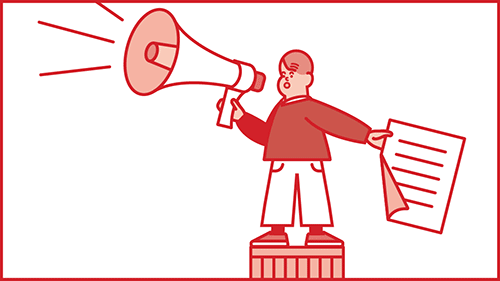For more stories like this, sign up for the PLANSPONSOR NEWSDash daily newsletter.
Reasons to Communicate Regularly With Employees About Retirement
Megan Yost, with Segal Benz, discusses how keeping employees engaged with their retirement benefits helps them get the most out of benefits and feel more financially secure.
A lot has been written about employees’ financial stress and how it affects their productivity and your organization’s profitability. Fortunately, when it comes to retirement planning, many plan sponsors have made saving for retirement easier than ever before. Features such as auto-enrollment and auto-escalation help people save money and increase their savings over time. Even target-date funds offer auto-investing to help people’s money stay diversified.
But will a set-it-and-forget-it approach really help your employees feel more confident about their financial well-being? Probably not. Communicating with your employees year-round, however, will help them get the most from your plan. Here are five reasons why.
1. Reiterating the value of your retirement benefits will help people appreciate them.
The more you communicate with your employees about their financial benefits, including retirement, the more likely they’ll be aware of what their benefits actually are. All too often, plan sponsors work hard to design and review their retirement plans, investments and other planning tools, but information about the features of the plan are buried in hard-to-read plan documents. If you want people to appreciate the benefits available to them, you have to remind them what those benefits actually are—and why you even offer them in the first place.
2. Your employees’ lives are constantly changing.
People need to know where to find information about their benefits—optimally, your benefits website. But first you need to get them in the habit of going there. And you do this through push communications—messages you send out, such as emails, home mailers and social media posts, among others. Through push communications, you build awareness of how and where to find information when it’s needed. This is crucial for employee benefits. Needs can change quickly. When they do change, you want employees to be in the habit of going to your benefits website for the information they need. This will help them feel empowered and supported, and they’ll appreciate your benefits more as a result.
3. Repetition builds financial acumen.
Retirement planning is complicated. It requires us to think about topics we’d often prefer to avoid, including aging, money and death. That’s precisely why it’s important to start engaging with employees on retirement planning early on—and to do so often. Ask employees to do just one thing at a time—such as reviewing how much they’re saving or how they’re invested. Align these communications with events in their lives or times of year when finances are top-of-mind, such as when your organization offers annual pay increases or when annual contribution limits are increased. Not only can this help ingrain healthy habits, but it can also help your employees build their financial capability.
4. People are super busy and super distracted.
It’s no secret that we’re oversaturated with information and pressed for time. So how do you compete for your employees’ attention? Take a page from consumer marketing and apply the rule of seven. This concept refers to the number of times someone needs to receive a message before they decide to make a purchase. And while you aren’t necessarily trying to get employees to buy something, you’re often trying to get them to take action. But you’re competing with technology, which allows marketers to send repeated, sophisticated and targeted communications in just one day alone. So it now takes even more efforts to get your message to resonate with employees.
5. Reminding employees why they’re saving may help prevent them from cashing out their accounts or withdrawing too early.
Enrollment and investing can require little input from employees if they’ve been auto-enrolled into your plan’s default fund. You need to make sure they understand what you’re trying to help them accomplish—creating a source of income for when they eventually stop working. One of the new requirements within the SECURE [Setting Every Community Up for Retirement Enhancement] Act—including lifetime income estimates in annual statements—should help with this. But you’ll want to connect people’s emotions to the purpose of their retirement account, so it doesn’t become a source of ready money when they need cash. You’ll also want to remind your employees of the broad array of benefits you offer to help them manage their financial well-being—from discounts to health savings accounts to subsidized child care and more. Helping employees save in other areas could free up some much-needed cash and prevent them from raiding their retirement accounts and missing out on the value of compounding.
Communicating regularly to employees about retirement and other financial benefits has lasting advantages for employees and your organization. It will help ensure employees get the most from the resources you provide and can help them—and their families—value what you offer, while simultaneously reducing their financial stress and helping them—and your organization—thrive.
Megan Yost is a vice president and engagement strategist at Segal Benz, a provider of human resources and employee benefits communications. Contact her at myost@segalbenz.com.
This feature is to provide general information only, does not constitute legal or tax advice, and cannot be used or substituted for legal or tax advice. Any opinions of the author do not necessarily reflect the stance of Institutional Shareholder Services or its affiliates.

